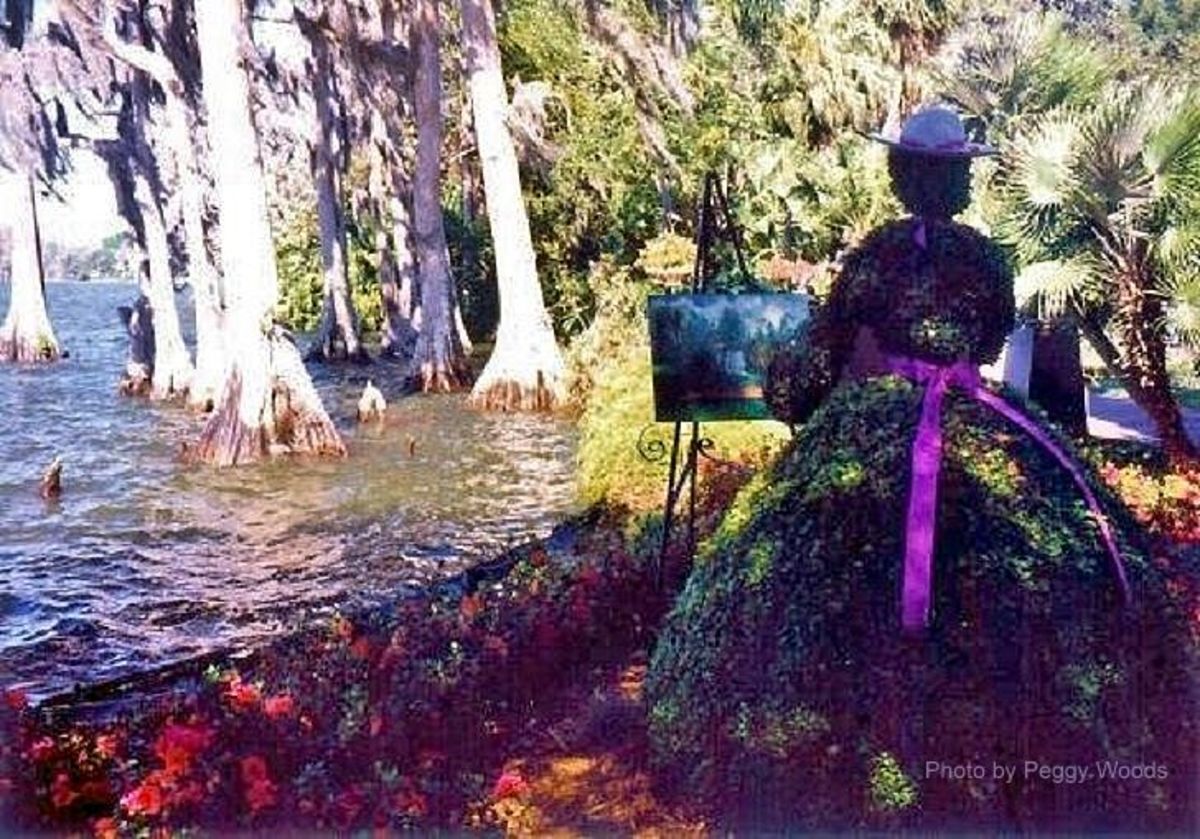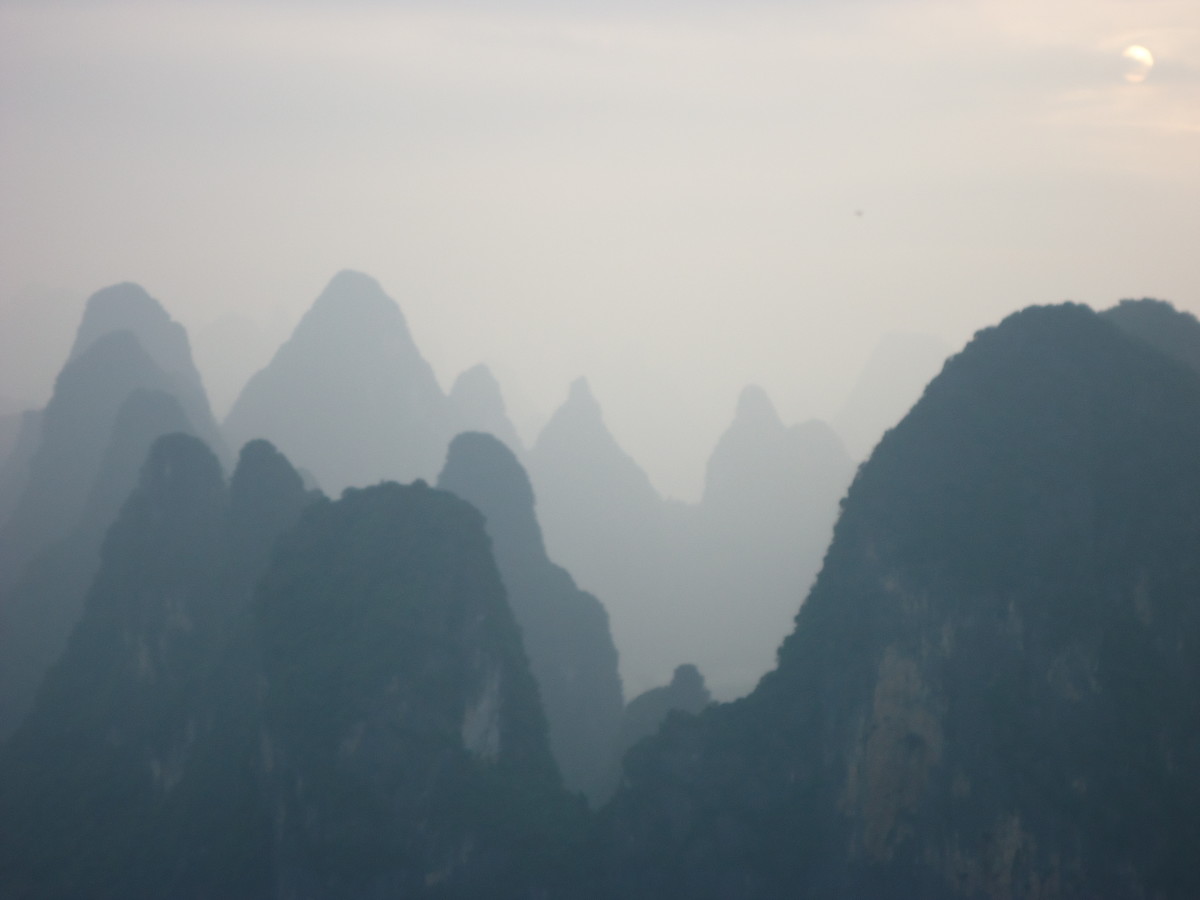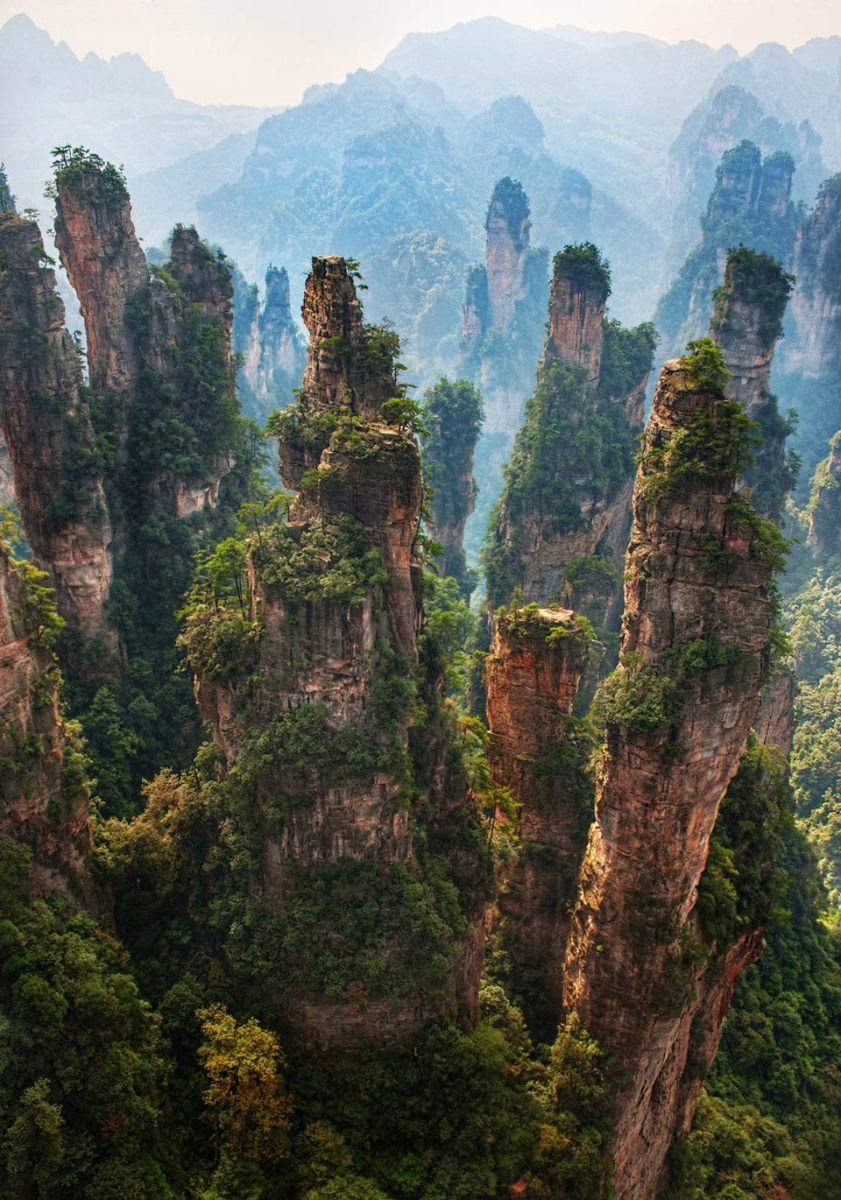- HubPages»
- Travel and Places»
- Visiting Asia»
- Eastern Asia
Ye Shengtao: The Suzhou Garden
Ye Shengtao
The following is a translation of Ye Shengtao's essay "The Suzhou Garden." It is famous amongst mainland Chinese, and is often assigned for students to read in school. The translation is my own, after I was assigned the original text for reading in my Chinese language course.
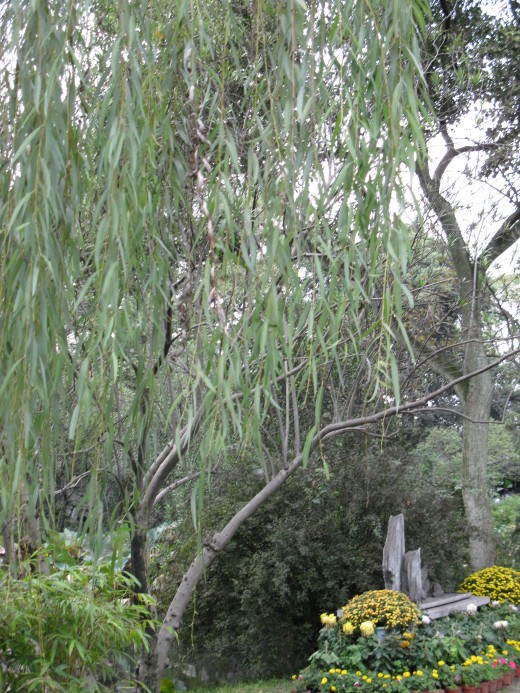
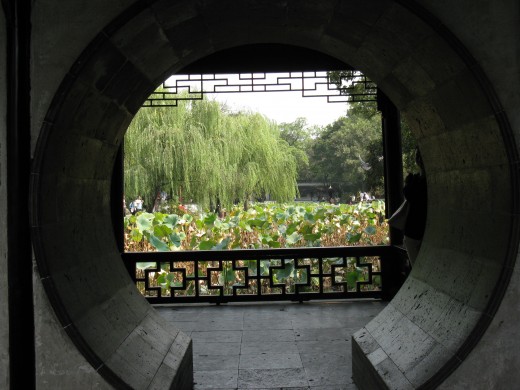
The Suzhou Garden
It is said that there are over a hundred gardens in Suzhou, of which I have been to more than ten, alongside visits to gardens in other cities. I feel that those in Suzhou are exemplary amongst China’s gardens, and gardens all over the country have been influenced to some degree by Suzhou’s. Therefore, one who wants to learn to appreciate traditional Chinese landscaping should not overlook the gardens of Suzhou.
Garden designers and builders must adopt measures suited to local conditions, even as they follow their own aesthetic, and so every successful garden is, of course, unique. But in Suzhou, there is something of a common thread amongst the variety of gardens: it seems as if the designers and builders pursue a consistent vision, that of making the visitor feel, wherever he stands within the grounds, that there is a picture-perfect scene before his eyes. For the sake of this goal, they give careful attention to the overall layout of the garden’s structures, the harmony between rockeries and waterways, the way that the flora and fauna are set off, and the natural flow between spaces near and distant. In a word, each element exists to contribute toward the overall perfection of a whole picture, and under no circumstances is any blemish tolerated. Both builder and designer seek only to give guests the feeling of being inside a painting, and the successful realization of their goal will make every visitor respond with, “It’s like walking through a painting.”
China’s buildings, from its ancient palaces to any ordinary modern residence, generally favor symmetry, with each side perfectly balancing the other. The Suzhou garden, however, does not embrace this practice — in fact, Suzhou gardens seem to deliberately eschew symmetry. If the garden’s eastern side houses a pavilion or covered corridor, the structures in the western part will all be of a different design. Why is this? I think, using pictures as an analogy, that the symmetry of a building is like a simple pattern, whereas a garden is more like a painting. And the beauty of a painting comes not from carefully designed symmetry, but from a more natural, uncontrived sense of balance.
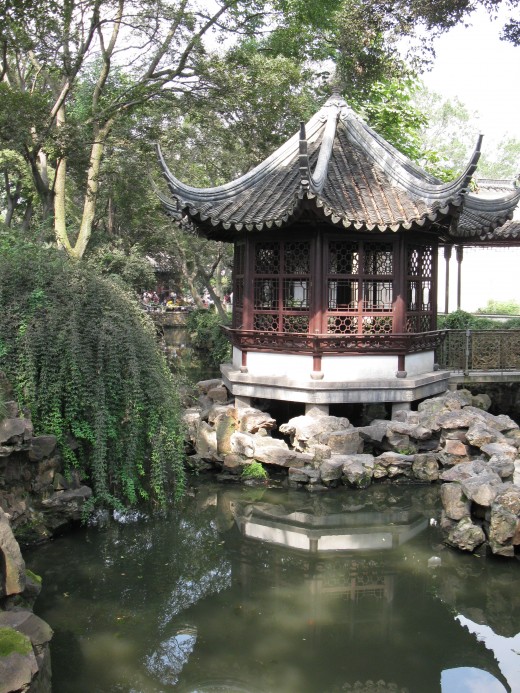
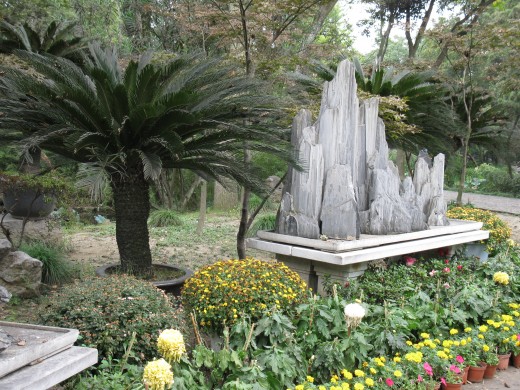

Rockeries and waterways are featured in all of Suzhou’s gardens. Arranging rock formations is more art than science in that, whether considering the layering of the rocks or the arrangement of the miniaturized mountain with the plants surrounding it, the garden’s designer must apply a lifetime of learning and experience to the work. If he does not have a good feel for natural peaks and valleys, he cannot create a scene that transports the viewer out of the city and into a mountain range. The water scene, usually built around running water, often forms the garden’s central feature, with everything being laid out around it. Streams in the garden may be crossed by several bridges, each carefully avoiding repetition of the others’ designs, and the banks of the ponds and streams are seldom bordered by meticulously arranged stones. Instead, the garden is built around the turns that follow the water’s natural flow, with a few delicately wrought rockeries or plants placed around it, laid at angles that create a feeling similar to that of a painting. Swimming in the ponds are goldfish or carp, and with the opening of summer’s lotus flowers or autumn water lilies, visitors will find themselves right in the center of a picturesque scene of fish swimming amongst aquatic plants.
The plants in Suzhou’s classical gardens also create the effect of a painting. Whether tall or short, the plants stand elegantly overlooking the garden. Trees will be arranged to alternate between deciduous and evergreens, flowering plants and conifers, thereby avoiding a sense of loneliness in all of the four seasons. The arrangement of the trees avoids straight lines of military precision, recalling instead the fluid strokes appreciated in Chinese artistry. In several of the gardens, the ancient vines and creepers set against a rugged background are quite typical of a good painting, and the flowers create a priceless beauty all their own as they open. To witness the garden’s endless wonders calls forth an inexpressible sense of joy.
Visitors to Suzhou’s gardens should take note of the walls and corridors, which play the role of partitioning the grounds, thereby creating an illusion of space. The bricks on the walls sport pictures carved in relief, and most corridors stand unblocked on either side. These structures serve to screen different parts of the grounds, so that they may be revealed at leisure, thus creating a perception of depth within the garden. In some of Suzhou’s gardens, mirrors have been installed, expanding the spaces to virtually double the area contained in the grounds.

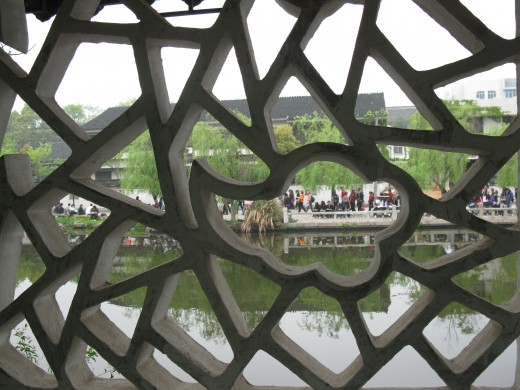
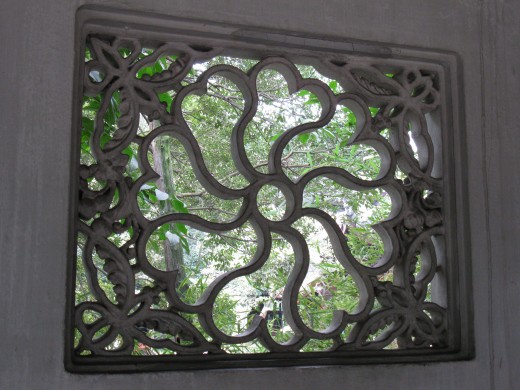
Another feature visitors should not ignore is that practically every corner of the garden displays a unique design, whether it be the spider grass planted next to a stone pathway, ivy climbing up a wall, or the shelter of a floral pattern. If a window opened up on a white wall, it would seem too plain, and so such spaces will instead be adorned with stalks of bamboo or palm fronds. The purpose of all of these effects is to capture, even if only in a minute space, a piece of the infinite beauty to be enjoyed by those touring the grounds.
The picturesque designs and refined handiwork of the doors and windows inside of Suzhou’s gardens displays craftsmanship of the highest sort. There is nothing base about the intricate workmanship put into the doors and windows, which, even in their simplicity, show great originality. Windows and doors with four, eight, or twelve opening panels, display a pleasing, orderly design. Photographers especially love the doors and windows, and use the play of light and shadow to create whatever effects most please them in their photos.
Gardens in Suzhou differ from those in Beijing in their preference for sparse use of color. Roof beams, pillars, and the ledges of windows and doors are generally lacquered in unobtrusive colors, and the walls are white. In some cases, the lower half of the wall will be laid with terrazzo tiles, where contrast between grays and whites predominates, topped by a consistent grey pattern on roof tiles and eaves. These neutral colors serve as an ideal backdrop to the greenery of the plants, creating a soothing effect and, in their proper season, highlighting the dazzling brilliance of newly opened flowers.
Of course, one could speak endlessly of these matters, but, for now, I will refrain from writing more.
Translation ©2010 Shelly Bryant
• You can read Ye Shengtao's original Chinese essay here
• The photos in this hub were taken in Suzhou, mostly at the Humble Administrator's Garden and the Surging Waves Pavilion Garden
• Read more about I. M. Pei and his connection with Suzhou gardens and their influence on his design of the New Suzhou Museum at this hub



